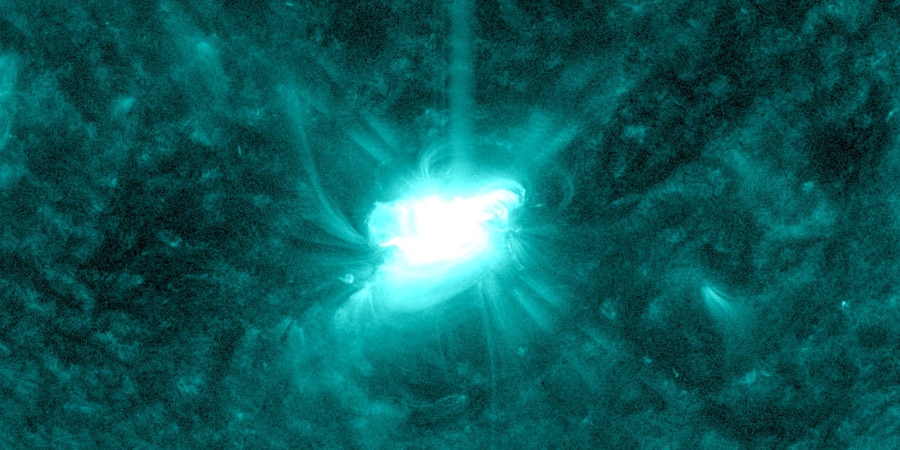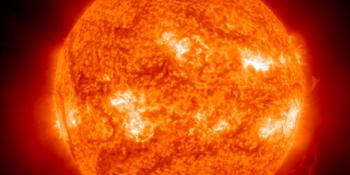M4.7 solar flare, G1 storm
Saturday, 28 August 2021 12:48 UTC

We have had a quiet summer when it comes to space weather but our Sun is starting to kick into a higher gear right as autumn approaches for us on the northern hemisphere.
Sunspot region 2860 developed rapidly during the past 24 hours and is now a complex sunspot region with a Beta-Gamma-Delta magnetic layout. This resulted in a long duration M4.79 solar flare (M1-minor) which peaked at 06:11 UTC. Type II and IV radio emissions were associated with the solar flare and this suggested the event was eruptive. Due to the location of sunspot region 2860, it is very likely that the resulting coronal mass ejection has an earth-directed component.
But that's where the good news ends. When up to date coronagraph imagery became available from STEREO and SOHO it became quickly obvious that the resulting coronal mass ejection should be called nothing less than a disappointment. A slow and very faint coronal mass ejection became available with a mostly southward trajectory. While it could give us a glancing blow in 4 to 5 days from now, we expect nothing from it. The C3.0 solar flare CME is a much more interesting event and that coronal mass ejection could arrive on Monday.
The coronal mass ejection from today's M4.7 solar flare can be called nothing else than a disappointment. The CME is faint, slow and mostly aimed southwards. We expect little or no effects from it once if it arrives at our planet. More M-class events from 2860 remain possible. pic.twitter.com/5xYzHEwuwJ
— SpaceWeatherLive (@_SpaceWeather_) August 28, 2021
More M-class (R1-R2) events can not be ruled out due to the region's complex Beta-Gamma-Delta magnetic layout.
G1 geomagnetic storm
Here on Earth we also had some action. A slow moving coronal mass ejection passed our planet and brought with it an extended period with a southward pointing Bz component of the interplanetary magnetic field. This resulted in minor G1 geomagnetic storm conditions today around 2 o'clock UTC.
Minor G1 geomagnetic storm (Kp5)
— SpaceWeatherLive (@_SpaceWeather_) August 28, 2021
Threshold Reached: 02:16 UTC
Follow live on https://t.co/Zkq26B89Y7 pic.twitter.com/TNZ4g7FuqG
Thank you for reading this article! Did you have any trouble with the technical terms used in this article? Our help section is the place to be where you can find in-depth articles, a FAQ and a list with common abbreviations. Still puzzled? Just post on our forum where we will help you the best we can!
Latest news
Latest forum messages
Support SpaceWeatherLive.com!
A lot of people come to SpaceWeatherLive to follow the Sun's activity or if there is aurora to be seen, but with more traffic comes higher server costs. Consider a donation if you enjoy SpaceWeatherLive so we can keep the website online!

Space weather facts
| Last X-flare | 2025/01/04 | X1.85 |
| Last M-flare | 2025/01/09 | M1.1 |
| Last geomagnetic storm | 2025/01/04 | Kp5 (G1) |
| Spotless days | |
|---|---|
| Last spotless day | 2022/06/08 |
| Monthly mean Sunspot Number | |
|---|---|
| December 2024 | 154.5 +2 |
| January 2025 | 144.5 -10 |
| Last 30 days | 151.1 +32.8 |


